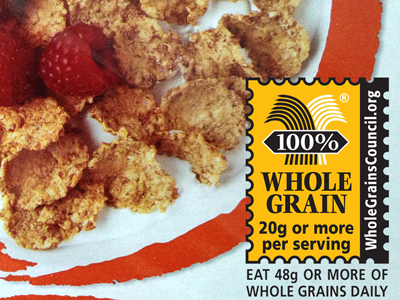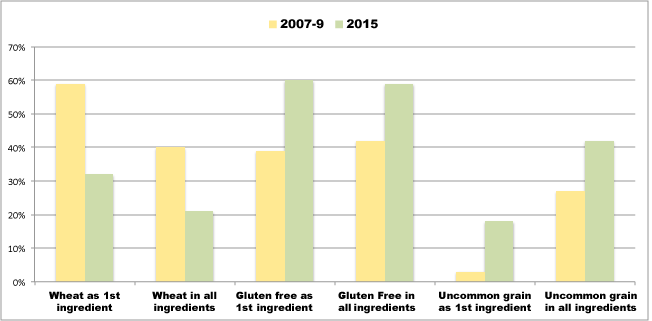Share This
The Whole Grain Stamp. A small black and gold symbol that has had a big impact on health and nutrition around the world. Since January of 2005, the Stamp has been advising consumers on whole grain content and helping them make educated decisions on the items they purchase and consume. As we celebrate Whole Grains Month, we thought this would be a good time to reflect on how the Whole Grain Stamp has grown and changed over these past ten years..
The Stamp has become a world traveler.
In fact, as of September 2015 the Whole Grain Stamp is now approved for use on over 10,500 products in 44 different countries. At this time, 21% of Stamped products can be found outside of the United States. We originally designed this packaging symbol as a US-only program – but companies and consumers in other countries wanted it too! How could we say no?
The Stamp has become well-known and trusted.
In our recent Consumer Insights Survey, we learned that nearly half of people polled are aware of the Whole Grain Stamp and more than 80% trust the Stamp’s claims regarding whole grain content. Perhaps more importantly, almost 80% said that they would be more likely to purchase a whole grain product bearing the Whole Grain Stamp than one without it, and just over half would question a product’s claims about whole grains if it did not have the Stamp. This is big news, and a good reason for companies and manufacturers to want to use the Stamp on every one of their whole grain products.
A wider variety of grains are used in Stamped products
Over the years, as more and more companies joined the Whole Grains Council’s Stamp Program, more and more types of products came across our desks, and over time, different trends began to emerge. At the beginning, “whole wheat” was the top ingredient in most Stamped products. Now, wheat has dropped down the list and more gluten-free grains like brown rice and quinoa are becoming more popular as the main grain ingredient in products. This could be a result of the gluten-free trend; however, gluten-containing grains including rye and barley have also shown increases. It is more likely that consumer knowledge and interest in the wide variety of whole grain options has bumped all less common “beyond-wheat” grains up the list as main ingredients in many up-and-coming products.
There are so many different tasty and nutritious whole grains out there, now is the perfect time to experiment and see what they’re all about. For example, to celebrate Whole Grains Month throughout the rest of September, use our Product Finder feature to search by category and Stamp to find a new product to try out yourself or to share with others, then tell us about it! You could even enter our Instagram contest to show us what you had and with who! With so many Stamped products to choose from, the possibilities are endless!
(Harley)



Add a Comment